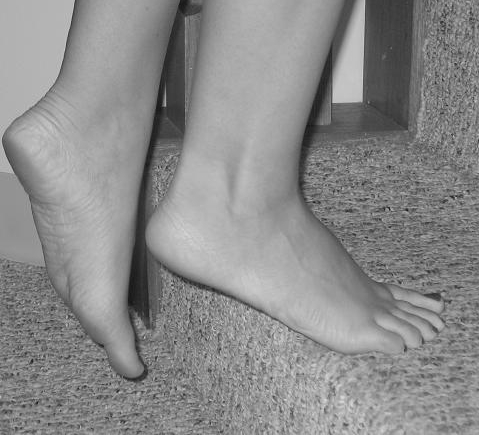By Noah Karrasch, CORE bodyworker and author of Meet Your Body and Freeing Emotions and Energy Through Myofascial Release.
I’ve long believed that crutches are a useful thing; I also believe that when on crutches, the goal should be to get rid of them and return to using one’s own body. This has got me thinking about feet and arch ‘supports’.
Many of us assume we can only feel comfortable while we have arch supports, either embedded into our shoes or through special orthotics developed specifically for our personal disorganized foot bed. After lots of thought, I disagree.
Granted, orthotics and other supports will take pressure off of aspects of the foot that hurt. But they’re not challenging the body to return to life. A personal disappointment: the physio/physical therapy model too often seems to suggest that a weakened muscle need not be identified and strengthened as much as it should be subdued and subordinated to muscles trained to strengthen themselves around it. This seems to me to be exactly what arch supports do.
On a recent vacation I walked attentively about four miles up the beach, then back, daily…barefoot and in sand. I really paid attention to tracking my feet straight ahead (my right loves to turn out), and remembering to land less heavily in my heels and push off more strongly through my toes and metatarsals. I found the walk to be effortless and my body to be extremely grateful for the overall workout/massage it was getting from the toe hinge action. As I’ve returned to the ‘real’ world, I’ve lost some but not all of that newly found awareness and ease.
This got me thinking about strengthening/conditioning the metatarsal hinges. So, I stood on a step, facing downstairs, with my toes all curled over the edge of the stair. As I pushed my toes into the step (vertical and back towards myself while their tips tugged down towards the floor), I immediately found unknown muscles in my foot. When I further tried to lift my metatarsal joint on one or the other big toe while maintaining the above directional pressures, my left foot complained dramatically. Any wonder the left side is also my ‘bad’ leg: the one that was most damaged in [a plane crash in] 1987. I’ve continued to work to reclaim that leg over the years, and believe that this simple discovery of the metatarsal joint’s weakness is moving me through a whole new layer of awareness, and allowing me to learn to operate that toe hinge in a way I long ago lost—if I ever had it!
For several years I’ve been thinking that many of us are dying physically from the feet up. If we don’t have juice in our legs, all of which is pumped by muscle action precipitated by use of the toe hinge, we’re not pumping old toxic blood up and out of our system. If we don’t use the muscles in our legs (and we don’t if we walk and stand heavily in our heels), we’re slowing down the energy throughout the body. Can we change that? I think so.
So, I’m not saying “Throw away those orthotics and arch supports!” I am saying, “Let’s think about whether reconditioning ankle, toe and arch hinges might make us stand, walk, and live more fully in happy feet.”
 Noah Karrasch lives in Springfield, Missouri, USA, where he has developed and still practices CORE Fascial Release Bodywork. He teaches intermittently in the US and Europe. In addition to certification by the Rolf Institute (1986) and advanced certification by the Guild for Structural Integration (1991), he has been certified as a provider of continuing education by the National Certification Board for Therapeutic Massage & Bodywork (NCBTMB) since 2000.
Noah Karrasch lives in Springfield, Missouri, USA, where he has developed and still practices CORE Fascial Release Bodywork. He teaches intermittently in the US and Europe. In addition to certification by the Rolf Institute (1986) and advanced certification by the Guild for Structural Integration (1991), he has been certified as a provider of continuing education by the National Certification Board for Therapeutic Massage & Bodywork (NCBTMB) since 2000.
Reprinted with permission from Noah Karrasch’s Spring e-Newsletter, March 2012.

going barefoot would kill my back!!
That would kill my back!!
I have pain in one heal. I walk and do yoga regularly. Someone told me that it is plantation facilitis. Do you have any suggestions as to help this for the long term? Thanks in advance